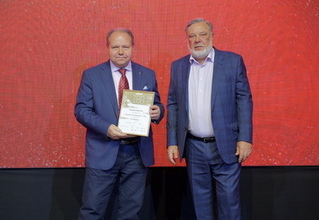Off-Axis Parabolic Mirrors
| Download Off-Axis Parabolic Mirrors Datasheet (PDF, 416 KB) |
Parabolic mirrors are the most common type of aspherical mirrors used in optical instruments. They are free from spherical aberrations, and thus focus the parallel beam to a point or point source to infinity.
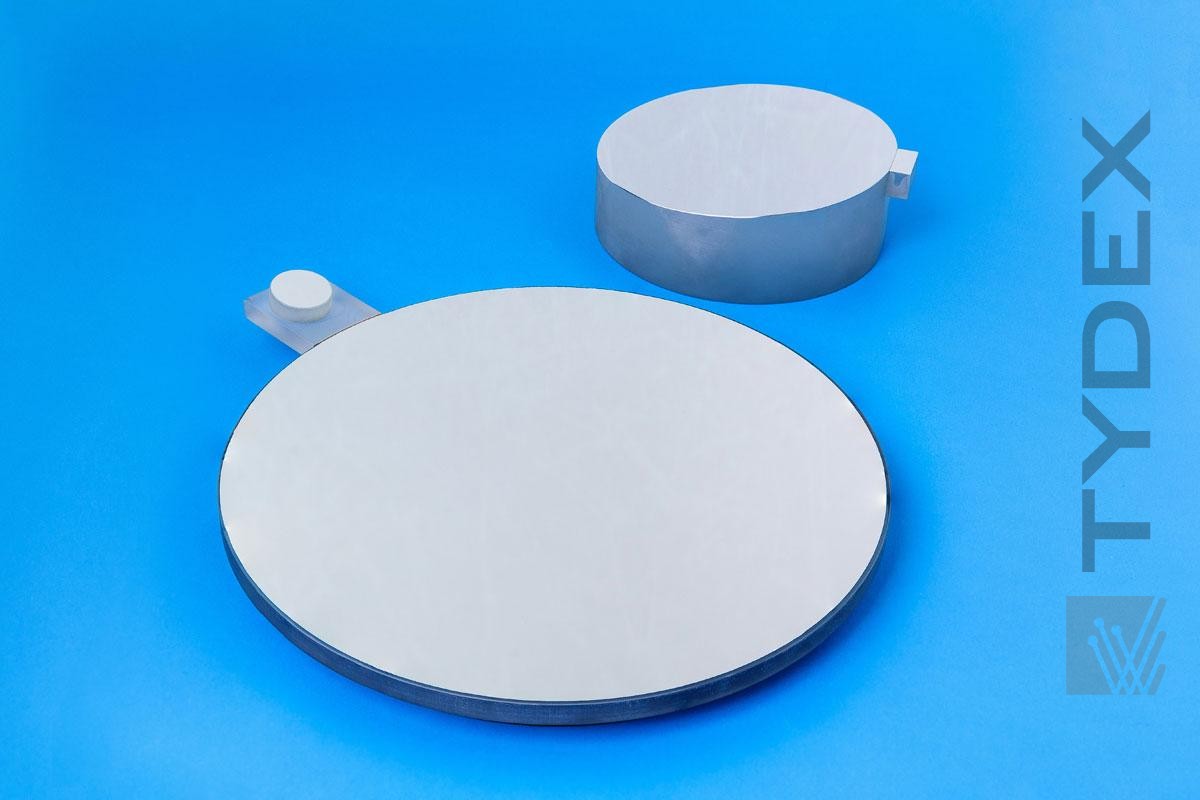
In many optical systems it is not necessary to use aperture that is completely rotationally symmetric. On the other hand, in some applications the central part of the mirror obscures the beam path and therefore is a disaster. For such systems, off-axis mirrors offer many advantages versus the traditional paraboloids.
Main applications of off-axis parabolic mirrors are as follows:
- Target simulators
- Collimators
- MTF measuring systems and other optics test devices
- Spectroscopic and FTIR systems
- Radiometers
- Beam expanders
- Laser divergence measuring systems
Key advantages of off-axis parabolic mirrors
Use of off-axis optics allows optical engineers to achieve the following advantages:
- Minimize system sizes
- Minimize system weight
- Both “wedged” and equi-thick mirrors are available
- Minimize system cost
All this results in maximization of system efficiency and marketability.
How to specify OAP mirror
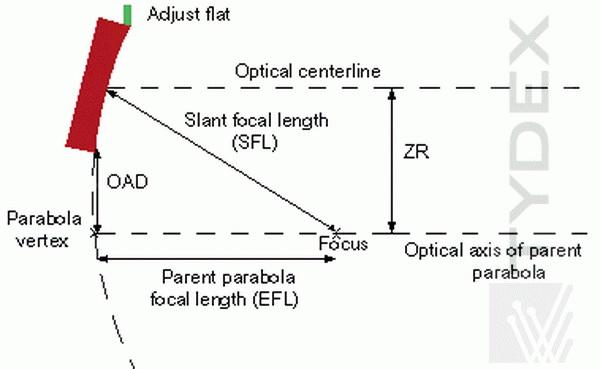
Fig. 1. Off-axis parabolic mirror draft.
Description to the draft.
Parent focal length (PFL) is the focal length of the parent paraboloid. It defines the shape of the surface as Z=R^2/4*PFL, where R is radial distance from vertex and Z is surface sagitta.
Slant Focal Length (SFL) is the distance between OAP mechanical center and parabola focus. This value may be calculated from PFL and vice versa.
Optical Centerline is the line parallel to parent parabola optical axis and coming through the mechanical center of OAP.
Zonal Radius (ZR) is the distance between parent parabola optical axis and optical centerline of the OAP.
Off-axis Distance (OAD) is the distance from parent parabola optical axis to inner edge of OAP. This value may be calculated from ZR and vice versa.
Adjust flat is commonly glued to OAP. It is perpendicular to parent parabola optical axis (and therefore to OAP centerline) and helps greatly to adjust OAP in the optical system.
To fully describe OAP one has to specify 5 parameters:
- PFL (or SFL),
- ZR (or OAD),
- CA (clear aperture),
- SA (surface accuracy),
- and SQ (surface quality).
Auxiliary parameters are:
- preferable mechanical size and thickness (if not specified we state Diameter = CA+10 mm and Thickness = Diameter/8),
- preferable material (if not specified we state LK-7 optical glass – Russian analogue of Pyrex),
- and coating type (if not specified we state protected aluminum).
Key data for OAP mirrors we produce
- Typical material is LK-7 (analogue of Pyrex), also Supermax33 (SHOTT), AstroSitall CO-115M (analogue of Zerodur), and K8 glass (analogue of BK7) are available on request.
- Typical surface accuracy is l/8 at 633 nm PtV, l/40 RMS. Higher precision surfaces may be produced on the request.
- Typical coating is protected Al, other metal (silver or gold) or multilayer dielectric coatings are available on request.
- Off-axis angle is up to 45 degrees, typical value is 5-30 degrees.
- Focal lengths are from 150 mm up to 12 meters. Typical value is 0.5-2 meters.
- Diameters are up to 640 mm. Typical values are 100-400 mm.
All these parameters are not independent. For example longer focal length allows better SA and longer ZR makes for lower SA.
Documentation
Together with each mirror we supply a certificate that shows SA, SQ, measured data for PFL and ZR, and the mechanical sizes. Interferometer graph of the surface, calculated surface error profile and coating reflection spectrum are attached to this certificate. Sample interferometer graph, surface error profile and coating spectrum are shown below. These are for CA 8” mirror with ZR 7” and FL40.
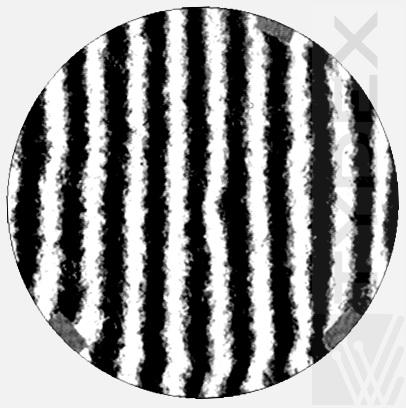
Fig. 2. Typical interferometer graph of OAP mirror.
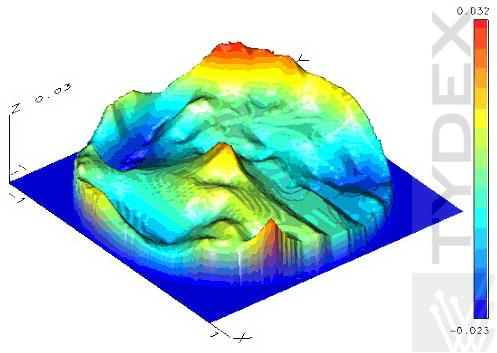
Fig. 3. Surface error profile reconstruction.
Wave front analysis
Units of deformations measuring: microns
Wavelength: 0.633 μm
Reference surface: sphere
Subtracted aberrations:
Form of zonal error - Zernike polynomial
Parameters of regular errors
D = -0.000 Lx = 0.000 Ly = -0.000 C = 0.000 RMS(W) = 0.009
A = 0.013 FIA = 41.300 PV = 0.025 RMS(W-A) = 0.007 FA = 0.361
B0 = 0.007 PV = 0.011 RMS(W-Z) = 0.008 FZ = 0.137
B2 = -0.043
B4 = 0.043
C = 0.020 FIC = 5.327 PV = 0.013 RMS(W-C) = 0.008 FC = 0.074
Local errors
|
||||||||||||||||||||||||

Fig. 4. Typical reflection spectrum for protected aluminum (Al + SiO2) coating.
Short Description and Key Advantages of the Technology
The manufacturing technology was developed to supply mirrors cheaper and in higher volume for use in aero/defence applications. Typically, OAPs are made by polishing and slicing-up large on-axis parent paraboloids. Obviously, this “traditional” method is quite expensive, especially when perhaps only 1-2 mirrors are needed. This older method also places heavy restrictions on the range of available combinations of focal lengths and off-axis distances. The other “traditional” method is diamond turning. Its main disadvantages are limitations for substrate materials (metals), lower surface roughness, and accuracy.
Instead of the above-mentioned methods of OAPs production, our OAP facility uses a sophisticated, computer-controlled spot-correction polishing process. It combines advantages of conventional polishing (smooth surface and possibility to use common glasses) and diamond turning (possibility to produce OAP without polishing of full paraboloid). After each polishing run we measure the surface error using large interferometers that precisely simulate current surface error of the OAP mirror. Then the information from the interferometer is transferred to the polisher’s computerized controller, which calculates the optimum location, trajectory and rotation speed of the compact, spot-polishing head. We name this process retouching. Each mirror undergoes typically about 10 cycles of interferometric measurements, followed by retouching. Of course for state-of-the-art mirrors many more cycles are required.
This unique production technology allows us to offer precise optics at very competitive prices.
Mounts and Holders for Off-Axis Parabolic Mirrors
Mirrors are supplied with precision holders and mounts allowing precise positioning of optical elements within setup or instrument.
Every holder is available in both manual and motor-driven variants. Improved precision adjusters and screws, as well as locks, are available on customer’s request. Mirror assembly and adjustment within the mount, surface quality control with and without mount can also be provided.
Various holder types are available depending on the dimensions of the optical element. All types of holders and mounts have vacuum-compatible variants.
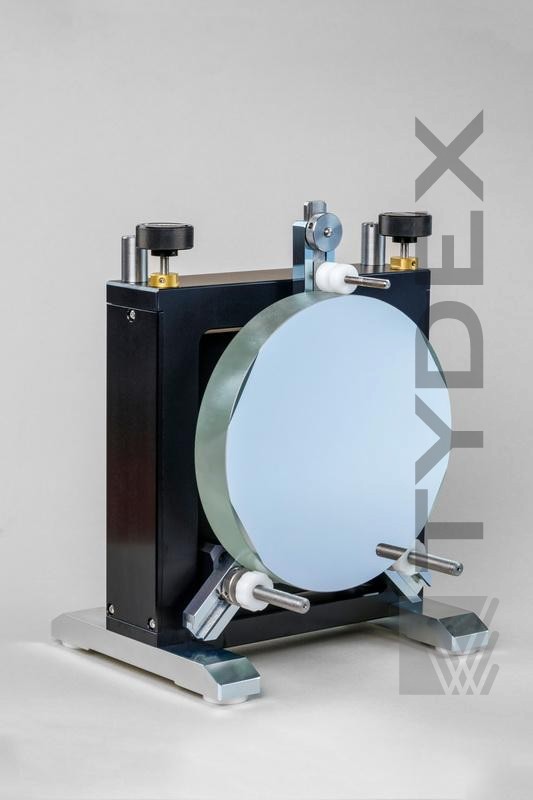
For the mirror diameters from 50 to 152 mm, there are mounts with horizontal and vertical adjustments. The mounts are made of steel or aluminum alloys and have several M6 holes for mounting on an optical table. Teflon padding and locking screw prevent damage to the optical components during installation and operation.
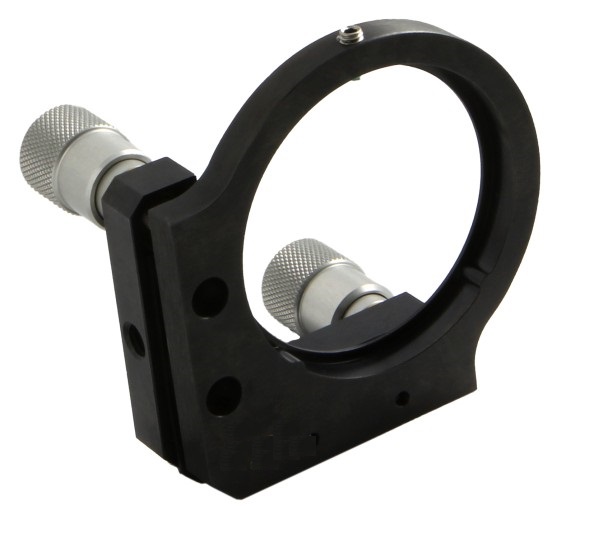
| Optical element diameter, mm | 50.8 | 76.2 | 101.6 | 152.4 |
| Adjustment angle range, ° | 8 | 6 | 5 | 4 |
| Adjustment precision, arcsec | 6-3.4 | 5-2.3 | 4-1.8 | 3-1.5 |
For mirrors up to 250 mm, we recommend kinematic precision mount with three mounting points.
Conveniently positioned thumb screws allow rotating of the mirror in horizontal and vertical planes. Rotation range ±1.5°, sensitivity 0.5 arcsec. Rail mounting system holds the optical element safely in place and allows adjustment of the optical axis height. . 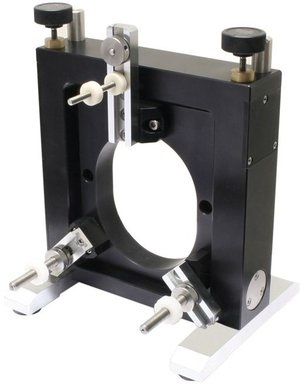
For optical elements from 250 to 500 mm, we provide holder model supporting mirrors up to 30 kg. 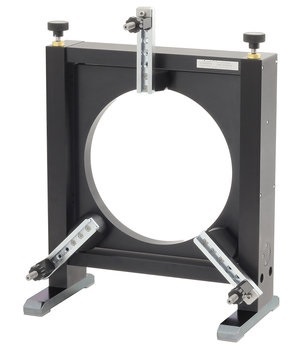
Vertical rotation range ±1.52°, horizontal rotation range ±1.55°. Adjustment sensitivity is 1.5 arcsec.
To hold large-size mirrors greater than 500 mm in diameter, we have developed a special rotating mount.
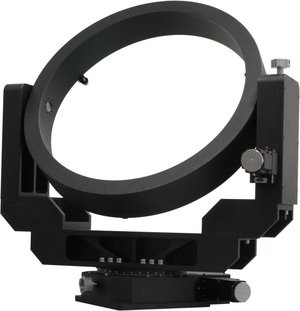
To hold large-size mirrors greater than 500 mm in diameter, we have developed a special rotating mount. When locking screws are loosened, the mount allows full 360° rotation of the mirror around horizontal and vertical axes. The turntable has a precision scale for the ease of rough positioning. Precise adjustment is achieved by high-precision adjustment screws with rotation angle range ±4° and resolution up to 3 arcsec in both planes. Mounting system relieves stress from the mirror and keeps reflected wavefront undistorted. This mount can also be used for large-size astrooptics and high-power laser optics with diameters up to 1000 mm.
On request, the adjustment hardware and mounts can be customized for your purposes.
Please fill our request form for price quotation and delivery.
Optics is ready to be shipped!
Optics Stock
Shipment/ Payment/ Warranty ...

